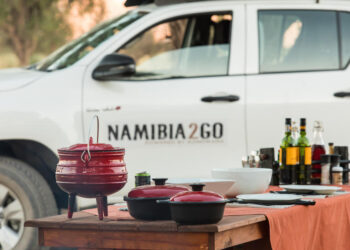
Minerals and metals have emerged as the main drivers of growth in Namibia’s exports to the United States of America under the African Growth and Opportunity Act (AGOA).
AGOA is a unilateral trade preference program focused on eligible Sub-Saharan African countries, enabling duty free trade into the United States for over 6,400 products enacted in 2000 and renewed until 2025.
According to US trade figures, of the N$127.8 million (US$8.481 million) worth of exports to the US in 2020, minerals and metals accounted for N$81.3 million (US$5.4 million).
This comes as exports from Namibia to the US under the preference program have increased from N$22.1 million (US$1.466 million) in 2016 to N$127.8 million last year.
In the four years under review, Namibia exported minerals and metals worth N$207.5 million (US$13,77 million) to the US.
Agriculture products, which are the second biggest trade item exported to the US under AGOA, increased from a mere N$241 123 (US$16 000) in 2016 to N$46.5 million (US$3.084 million) last year.
Meatco last year became the first African country to export beef to the US under AGOA and to date over 720 tonnes of beef products have been exported to the country.
“There is still important untapped potential for Namibian companies, particularly in the industries the AGOA Utilization Strategy identifies,†Walter Parrs, U.S. Embassy Namibia spokesperson said.
“There are opportunities for growing U.S. commercial ties to Namibia. Consumer goods, mining equipment, agricultural products, renewable energy, water production, transportation infrastructure, business services, and tourism represent particular opportunities for U.S. companies. Through AGOA, Namibia has an opportunity to explore avenues for Namibian products to enter the U.S. market.â€
Parrs added that the USAID TradeHub was working closely with export-ready Namibian firms to prepare for market entry into the United States, meet U.S. market entry requirements, meet prospective buyers, and support trade deals.
“This work is carried out in partnership with Namibian and U.S.-based Trade promotion Service Providers (TPSPs) with networks and market knowledge,†he said.
Parrs said based on the Namibian AGOA Strategy, the priority sectors are outlined according to short-term, medium-term, and long-term opportunities where increasing levels of investment and development are required for longer-term opportunities.
The priority sectors identified in a consultative process are:
- Short-term: Fish products, beef, semi-precious stones and marble, table grapes and dates, and devil’s claw
- Medium-term: Specialty foods (e.g., organic pearl millet), handicrafts, leather and leather products
- Long-term: Indigenous natural products derivatives
Â
Â











